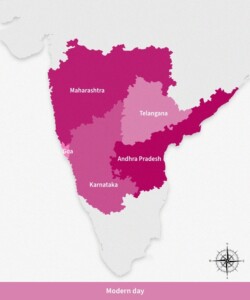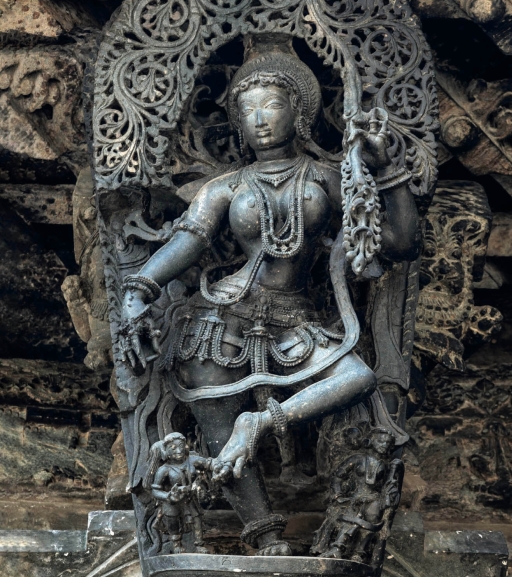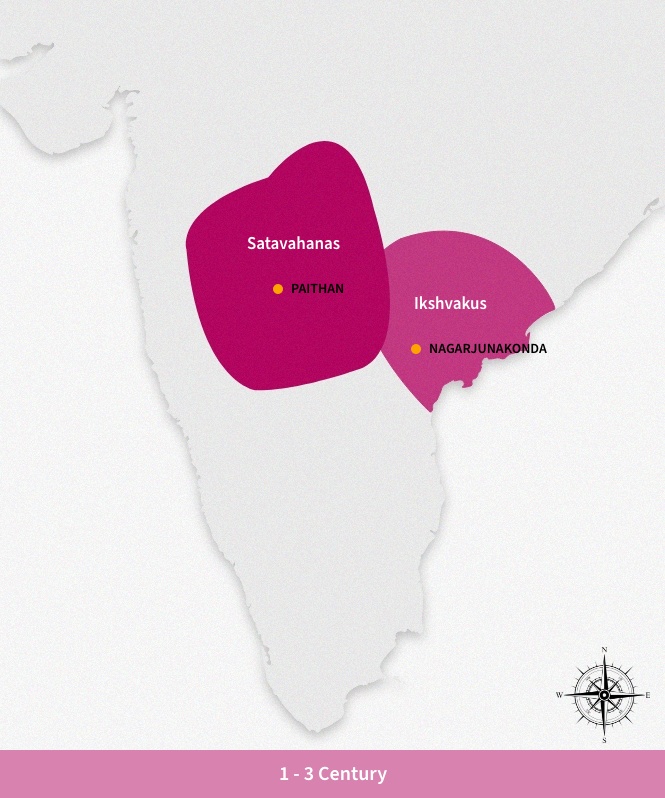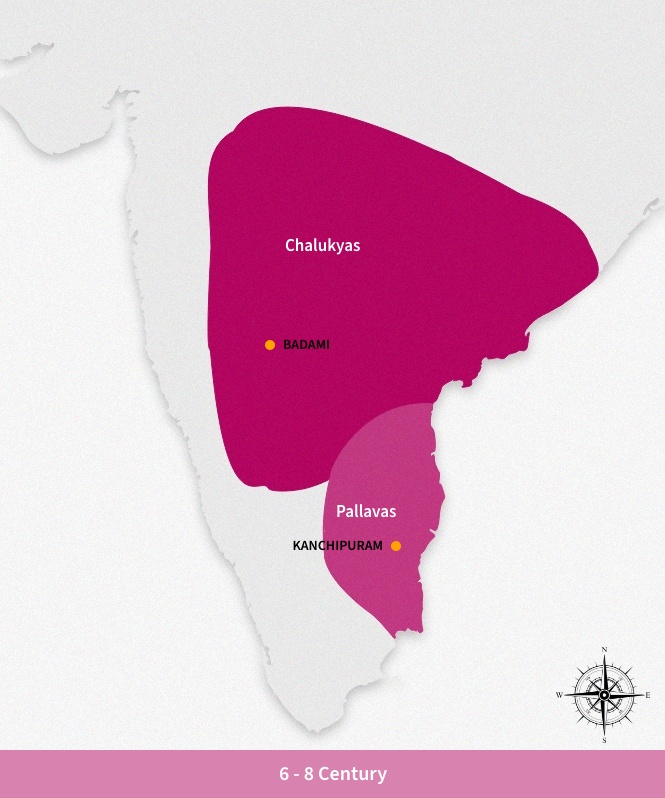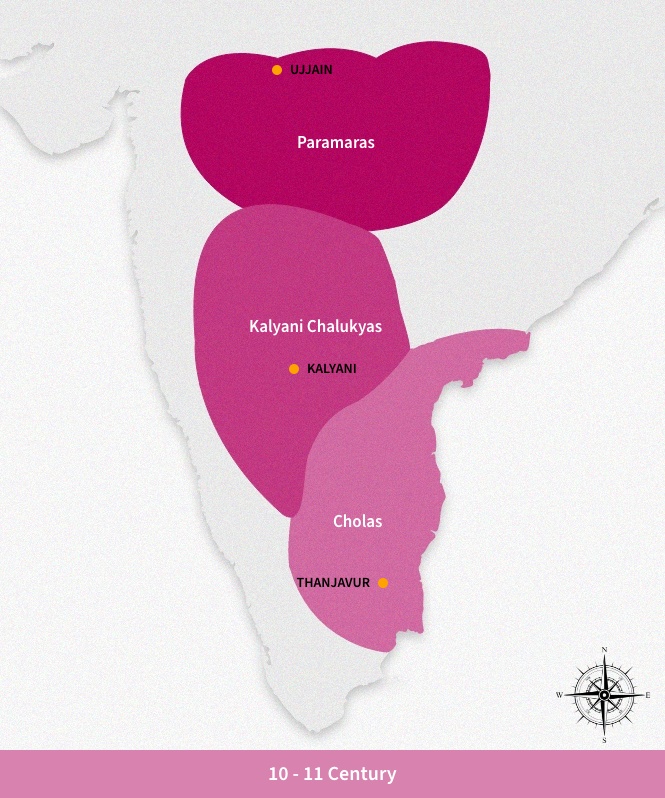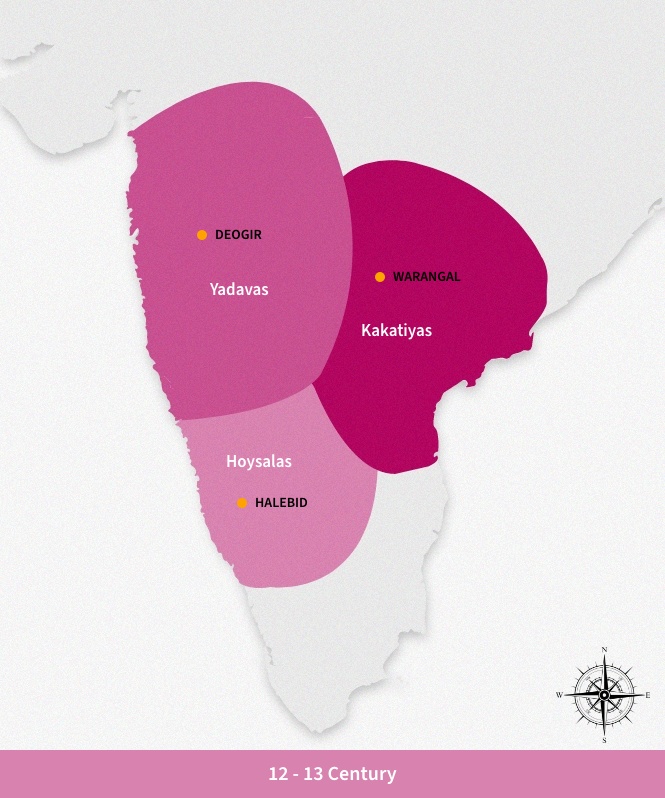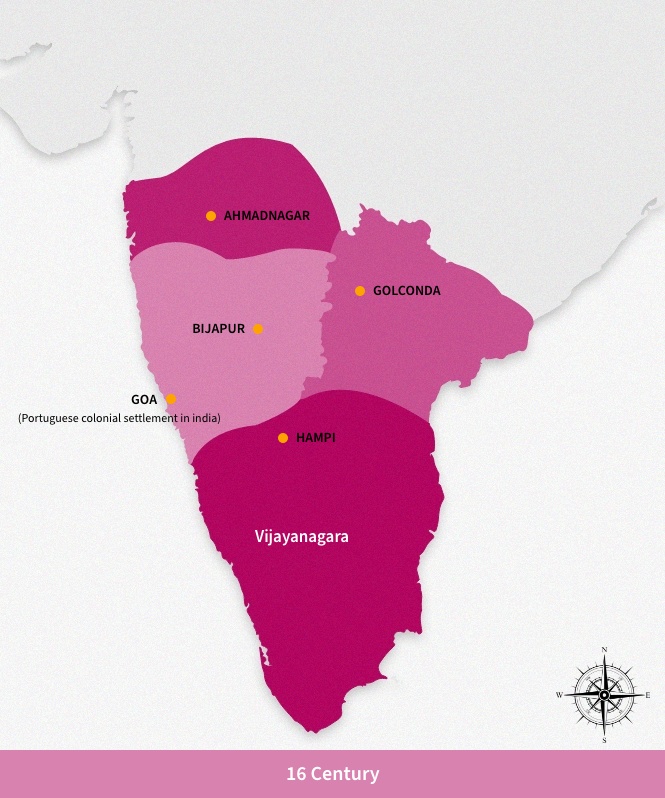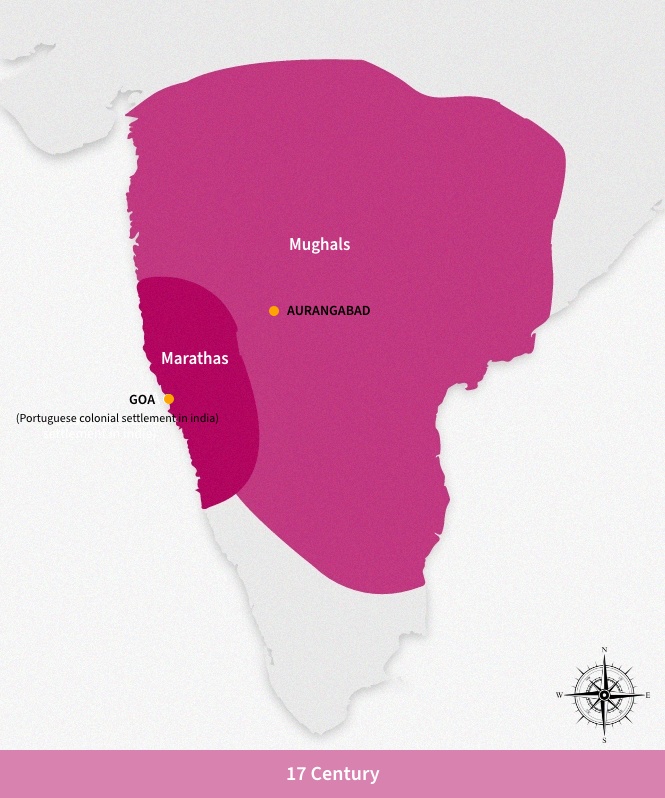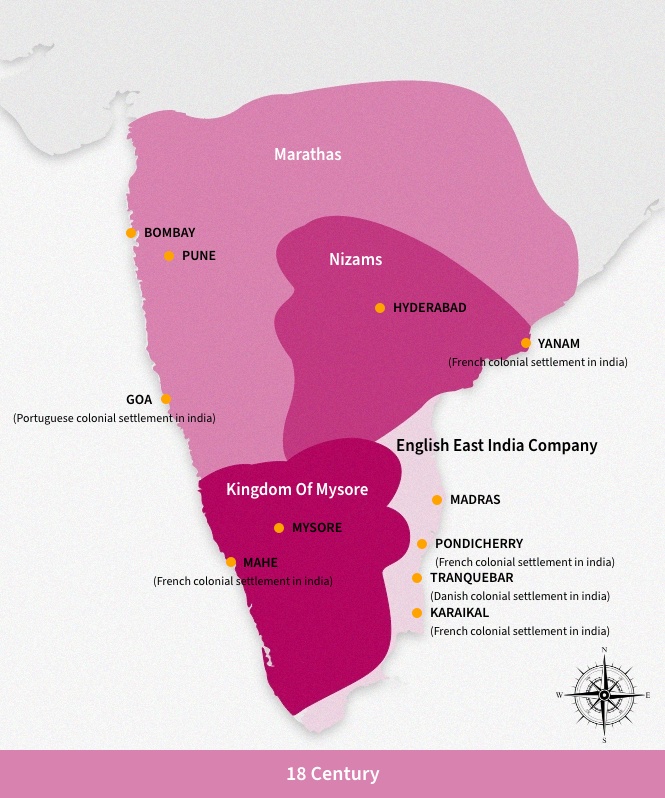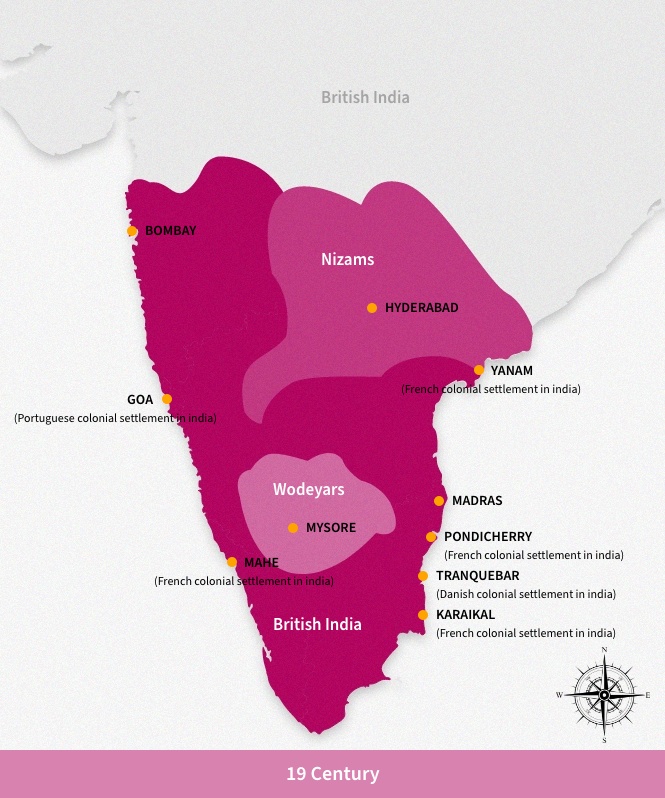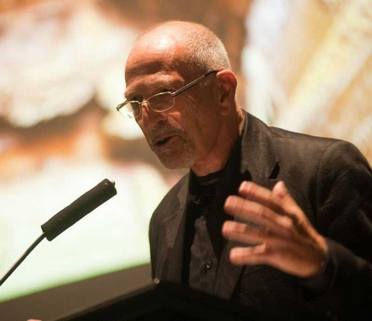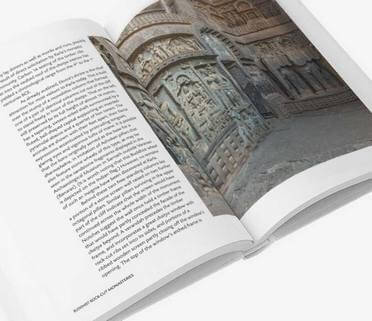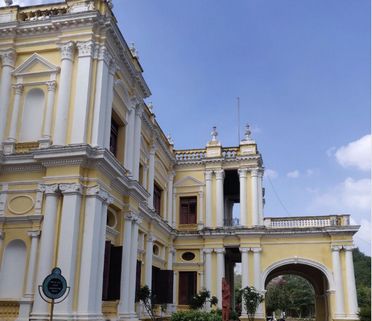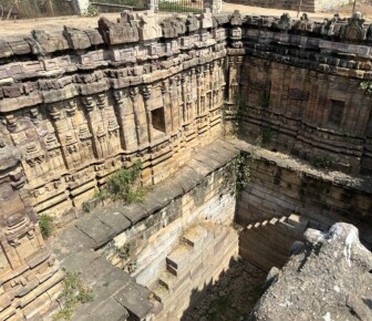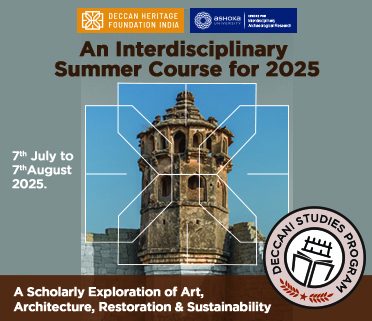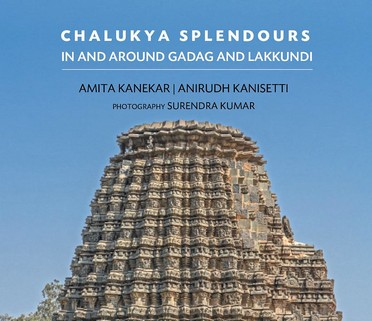Understanding the Deccan
Home to 11 UNESCO World Heritage sites and countless other important monuments, South India’s vast Deccan Plateau holds an immense architectural legacy, perhaps not as well known or appreciated today as it should be. Not surprisingly, The New York Times calls it one of the top 25 places to experience in one’s lifetime. At almost every turn, monumental religious, palace and fort architecture — testament to the creativity and ingenuity of the Indian people — awaits discovery, and demands our urgent care and stewardship.
Why the Deccan
The Deccan boasts a vibrant and complex history. Replete with ancient cultures, it stretches across an enormous area that today covers Maharashtra in the North, Karnataka in the South, Goa in the West, and Andhra Pradesh in the East.
The Deccan’s central location and abundance of natural resources made it once the cultural and economic melting pot of the world, a lucrative destination for all South Asian trade. The Deccan encompasses not only cities of hectic industry like Hyderabad and Mumbai, but also innumerable monuments to vanished kingdoms — from the Chalukyas in the sixth–eighth centuries, to the iron-age Maurya Empire, the Adil Shahis and Qutb Shahis in the sixteenth and seventeenth centuries — and more recent colonial powers like the Portuguese and the English.
At the Deccan Heritage Foundation, we consciously dedicate our work and expertise specifically to the region, advocating its historical significance, and doing our part to make sure the historical sites and monuments of this region are being maintained and restored.
The vast highlands stretching between the eastern and western coastal ranges of the peninsular subcontinent have seen the rise and fall of countless kingdoms, each of which has left behind architectural remains as proof of its former glory. Nowhere is that immense cultural wealth more evident than in the temple towns and former imperial capitals of northern Karnataka, near the Deccan Plateau’s semi-arid heart. Beginning in the sixth century, the Eastern Chalukya dynasty, a vast and culturally diverse empire, turned its successive capitals in the now-sleepy villages of Aihole and Badami and the ceremonial center of Pattadakal into hubs for experimentation in religious architecture, assembling free-standing temples from elaborately carved stone that drew influence from both North and South India and excavating and erecting sites of Hindu, Jain and Buddhist devotion. In the 14th century, the Muslim Bahmani kings introduced Persianate domes and crenellated walls at the fortress capital of Bidar, while in Bijapur, roughly six hours southwest, the skyline bristles with minarets and domes left behind by the Adil Shahi sultans, who ruled there in the 16th and 17th centuries. Farther south, the subcontinent’s last great Hindu empire blossomed in the city of Vijayanagar, built over the course of 200 years, then abandoned in 1565 after its defeat by the sultanates of the northern Deccan. Now known as Hampi, that great city marks the pinnacle of Dravidian architecture, with its soaring temple towers and colonnades. Taken together, these cities and towns, clustered in the northern districts of Karnataka state, represent a practically endless trove of architectural treasures at least as rich as the Mughal mosques and Rajput temples of North India’s well-trodden tourist circuit. More importantly, they speak to the long tradition of syncretism that has always defined India…
— Snyder, Michael. “The 25 Travel Experiences you Must Have.” The New York Times. November 17, 2022.
I went to school in South India, and the Deccan is very far from the world of the Taj Mahal and North Indian Islamic architecture. It was this unbelievable trail with beautiful temples in Aihole and Badami. Then you come to Hampi, which was once the capital of the Vijayanagara Empire, and it’s a site like Angkor Wat: absolutely stunning. Then you carry on to Bidar and Bijapur [Vijayapura] and you see mosques — it’s one of the most interesting, beautiful meeting points of Islam and Hinduism, but in the south of India as opposed to the north.
— Taseer, Aatish. “The 25 Travel Experiences you Must Have.” The New York Times. November 17, 2022.
Hampi is home to more than 1,000 monuments and temples from the Vijayanagara Empire, one of the last southern Hindu kingdoms, which ruled a large swath of South India from the 14th century until succumbing to invasions from northern sultanates in the 16th century.
The ruins are spread over 16 square miles near the banks of the Tungabhadra River. Today, the remarkably well-preserved remains at the site of the kingdom’s capital are part of a UNESCO World Heritage Site and a destination for Hindu pilgrims.
— Monk, Sebastian. “Hampi: A Forgotten Civilization in a Rocky Land.” The New York Times. November 26, 2019
The Deccan has always been a place apart, quite distinct in character from the rest of India. The great city states of the region — like those of their contemporaries in Renaissance Italy — were always more cosmopolitan and open to new ideas than their more conservative neighbours… Today, their art and architecture are little known beyond a few specialists, and much under-valued. In places many important artefacts are being destroyed to make way for the region’s hyper-development. The work of the DHF could not be more valuable or more urgently needed if this irreplaceable heritage is to be saved for future generations.
— William Dalrymple
Our guidebooks and publications shine a spotlight on the Deccan and its treasures. Learn more about how we contribute to knowledge and research about the Deccan, and access suggested travel itineraries in the region, here.
The Deccan Today
The Deccan today extends across a significant portion of India’s landmass, covering the states of Maharashtra, Karnataka, Andhra Pradesh, Telangana and Goa. It is home to megacities like Mumbai (India’s financial and entertainment capital); Bangalore (a major IT hub, considered the Silicon Valley of Asia); and Chennai (which controls a large part of India’s automobile industry and is a cultural hub for classical dance and music forms); along with other rapidly growing major cities including Hyderabad, Visakhapatnam, Pune, Nagpur, Gulbarga and Amravati, among others. Burgeoning populations and rapid development make the preservation of the cultural heritage of this region even more imperative today. We believe in the importance of working with local communities to engage with the Deccan’s future, by helping preserve its past. Support our efforts today.
